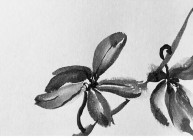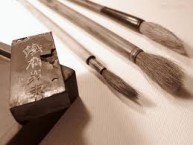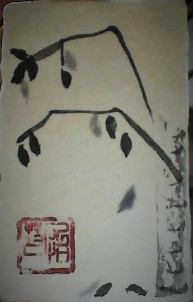Many people who come to Kyoto for travel or study-abroad come with expectations and preconceptions about its deep-rooted history, attachment to tradition, preservation of old customs and places, and general loyalty to the ways of the past. Tourists enjoy the torii gates at Fushimi Inari Taisha, the restored streets lined with machiya storefronts in Gion, and the countless hundreds of temples and shrines left over from the era of the Samurai. I spent a good amount of my first semester in Kyoto seeking out many of these types of historical-cultural experiences– I even chose a traditional art form, sumi-e, for my CIP activity– and even now, I love walking around the historical districts or visiting old temples on weekends. However, along with getting used to modern, everyday life in Kyoto, which has in fact developed into a very livable and culturally diverse city, I’ve gotten to know a side of Japanese life that isn’t tied to tradition or ancestral ways. In a place where everyone expects to see ancient buildings, traditionally-dressed Geisha, and narrow, lantern-lit alleyways (of which there are plenty to be found), there also exists a thriving, internationally-influenced modern culture, and a giant boom of lifestyle trends that closely resemble what was around me back home in the U.S.
Yoga is an ancient practice in itself, but the yoga trend in society is relatively new, and extremely current. Living in Boston, I was constantly surrounded by yoga classes, yoga wear, yoga images with inspirational Buddhist quotes, “yoga challenges,” and so on; as well as all the other facets of the yoga lifestyle, like trendy vegan cafes and specialized yoga clothing boutiques.
I was definitely surprised to find, once I’d started exploring a little deeper into everyday Kyoto life and society, that the same kind of trend is alive and flourishing here as well. I chose yoga classes as my CIP because I wanted to find out more about the Japanese philosophy and treatment toward the yoga lifestyle. Back at home, I was used to taking Vinyasa yoga whenever I did take a class, so I decided to continue the same thing here (they offer many levels of Vinyasa almost every day of the week at the studio I chose).
My yoga studio, Tamisa Yoga, is on the popular shopping street Teramachi, and includes a vegan cafe as well as a shop that sells yoga wear merchandise and imported organic foods. Tamisa reminds me so much of the kind of studios and organic cafes/smoothie-bars I am used to seeing back in the states– if even more hip and well put-together than ours are. It was so interesting to observe the way that people in Japan have embraced this globally-trending lifestyle, and taken their own spin on it both aesthetically and in practice. (The photos below are courtesy of tamisa-yoga.com.)
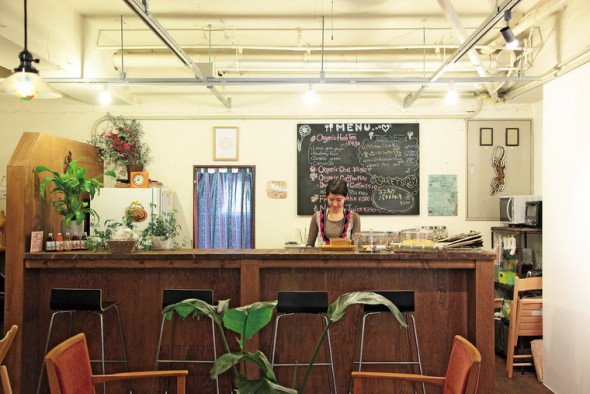
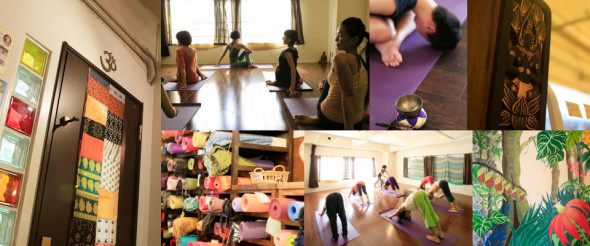 As far as the Vinyasa classes themselves, the main difference I noticed in the class culture was that everyone was more laid-back, including the instructor. Classmates smiled at each other and said a friendly お疲れ様ですat the end of each class, even offering to put away other people’s mats. The instructors spoke mainly in Japanese (although bilingual lessons are also offered), but some Vinyasa-esque phrases were reserved for English (“Relax your body, relax your mind, relax your heart”), and it seemed like everyone in the class understood what these meant. The fact that English and Western culture (foods and clothing from America, words written and spoken in English) is so tied to the yoga culture here, which had probably spread throughout East Asia to Japan far before America was even a country, was a very interesting point of study for me during my experience.
As far as the Vinyasa classes themselves, the main difference I noticed in the class culture was that everyone was more laid-back, including the instructor. Classmates smiled at each other and said a friendly お疲れ様ですat the end of each class, even offering to put away other people’s mats. The instructors spoke mainly in Japanese (although bilingual lessons are also offered), but some Vinyasa-esque phrases were reserved for English (“Relax your body, relax your mind, relax your heart”), and it seemed like everyone in the class understood what these meant. The fact that English and Western culture (foods and clothing from America, words written and spoken in English) is so tied to the yoga culture here, which had probably spread throughout East Asia to Japan far before America was even a country, was a very interesting point of study for me during my experience.
For anyone interested in taking beginner’s yoga classes, I recommend the activity both as a way to practice your Japanese listening and social skills, and to observe a very current and influential part of Kyoto culture. I’ll definitely be keeping up with the classes and the studio community while living here this summer.

